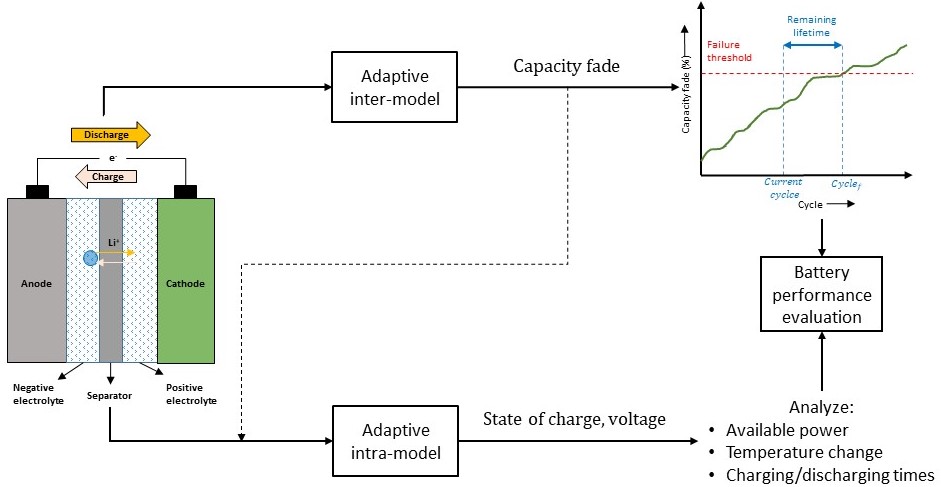
Due to their highly desirable characteristics such as high energy density, less weight, and low self-discharge, Li-ion batteries are popularly deployed in various applications, including powering electric vehicles. With increasing operating cycles, the degradation in a battery significantly impacts its reliability and can lead to failure events. Often, the reliability of a battery is defined by its remaining useful life (RUL), temperature, and smoothness of applied voltage or current. Specifically, RUL, which can be estimated from the predicted battery degradation trend, provides an idea about the number of cycles remaining before a battery is expected to fail. An accurate RUL estimation aids in developing effective predictive maintenance strategies for enhancing the battery’s health. Though RUL estimation helps in predicting the long-term performance of a battery, it is essential to also predict the battery’s condition in the short term to better monitor its overall performance. This requires modeling the dynamics of other battery variables such as voltage and state of charge (SoC) that evolve with charge-discharge operation. Accurate prediction of SoC and voltage helps understand many critical battery characteristics such as available power, charging and discharging times, and temperature change. Additionally, undesired cases of over-charging and over-discharging can be effectively mitigated through SoC prediction. Thus, real-time assessment of these variables together with capacity degradation enables better management of a battery’s performance. Our group works on modeling and monitoring the performance of a battery by predicting the inter-cyclic and intra-cyclic battery dynamics and accurately estimating RUL to enhance the overall battery operational safety.
Literature:
Bhadriraju, F. Khan, and J. S. Kwon, “An adaptive data-driven approach for two-timescale dynamics prediction and remaining useful life estimation of Li-ion batteries”, Computers & Chemical Engineering, 2023.
